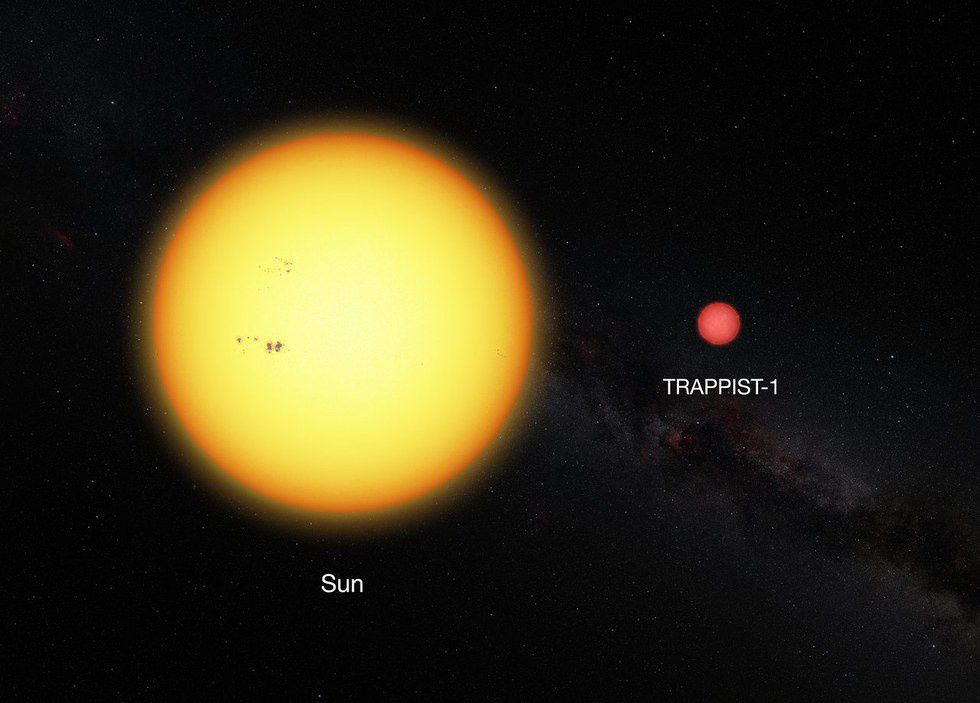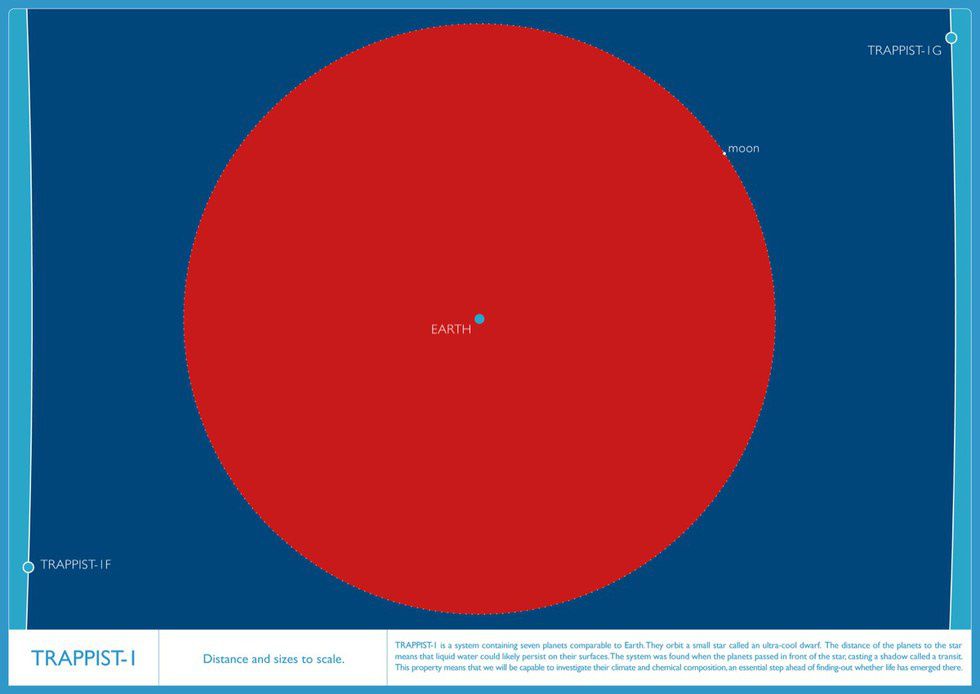While America is getting ready for the star studded Oscars, NASA found a massive discovery nearby another famous star; code-named Trappist-1, named after The Transiting Planets and Planetesimals Small Telescope (TRAPPIST) in Chile.
What's a Trappist?
Trappist-1 is classified as a red dwarf, or an "M-dwarf," and is named mainly because of the red spectral characteristic it shows. Red dwarfs are small stars, and Trappist 1 is significantly smaller than our own Sun. Below are two artist representations of Trappist 1 to our Sun and Earth.
Red Dwarfs are often orbited around by exoplanets, similar to our own Sun. Trappist-1 is orbited by seven of these exoplanets (seen below). The huge discovery comes from the fact that three of these planets are located in what NASA calls "the habitable zone", the area around the parent star where a planet is most likely to have liquid water.
OK cool, but what's so awesome about it?
This discovery breaks another world record in that Trappist-1 has the greatest number of habitable-zone planets found around a single star outside our solar system. All of these seven planets could have liquid water (key to life as we know it) under the right atmospheric conditions, but the chances are highest with the three in the habitable zone.
In May 2016, researchers using TRAPPIST announced they had discovered three planets in the system. Assisted by several ground-based telescopes, including the European Southern Observatory's, scientists were able to confirm the existence of two of these planets and discovered five additional ones, increasing the number of known planets in the system to seven.
The system of planets is located in the constellation Aquarius and it is about 40 light-years (235 trillion miles) from Earth. The system of planets is relatively close to us and could be further analyzed to find water and possibly other life forms. In contrast to our sun, the TRAPPIST-1 star is so cool that liquid water could survive on planets orbiting very close to it, closer than is possible on planets in our solar system.
All seven of the TRAPPIST-1 exoplanets are closer to their star than Mercury is to our sun. These planets are also nearby to the other, if a person was standing on one of the planet’s surface, they could gaze up and potentially see geological features or clouds of neighboring worlds, which would sometimes appear larger than the moon in Earth's sky.
Created By Darkness
All seven of the Earth-sized exoplanets are so close to their host star that they complete a single orbit (“one year”) in a matter of days, one and a half days for the nearest planet and 20 days for the farthest. This type of proximity also makes these planets, "tidally locked." When a planet is "tidally locked", there is always one face turned to the star, similar to how the Moon is seen on Earth (NOT the same way the Earth is seen on the Sun). This means that at any given moment there is only one side of a certain planet that is always baked in the light of Trappist, while the other is in an eternal cold darkness.
Researchers hypothesize that given the right atmosphere, this "one side face the sun" problem is avoided because the heat is evenly distributed in another way. But given some recent findings, it is possible that there may be nothing there. According to a team led by Vladimir Airapetian, at NASA Goddard; the flaring tempers of young red dwarfs, with their bursts of high-energy X-rays and ultraviolet emissions, could actually strip oxygen from the atmospheres of nearby planets. It's also possible that the atmosphere is stripped off.
Life? Or are we alone?
Who knows? Some NASA researchers theorize that it is still possible for life to find a way to thrive in Trappist-1. There could be some greenhouse effects happening in the system, that creates a warm and stable enough climate for life. But what kind of life? Currently researchers are saying very simple lifeforms that can thrive so close to the uncontrollable and unpredictable red dwarf, but there is no way we can find out without conducting more research. Who knows? Maybe in a few years we will find interplanetary species, only time can tell.
To learn more about Trappist-1, check out the links below:
https://www.nasa.gov/press-release/nasa-telescope-...
http://time.com/4677103/nasa-announcement-new-sola...





















